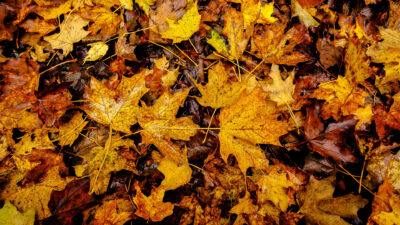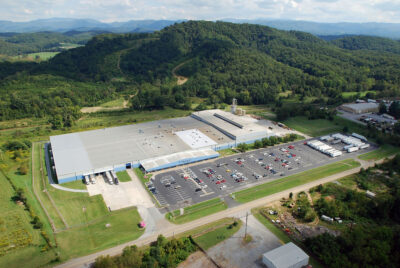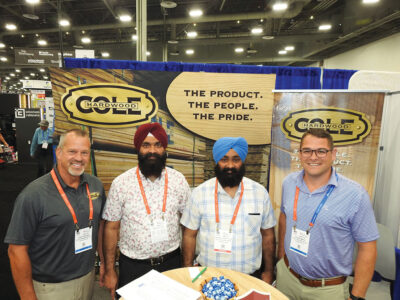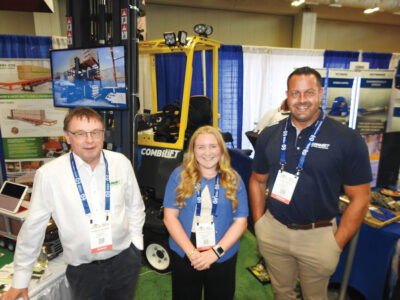Steinway & Sons: Tradition, Innovation, and the Art of the Piano
“Wood isn’t one-size-fits-all, and that’s where the tech comes in.” – Anthony Gilroy, vice president of marketing, Steinway & Sons
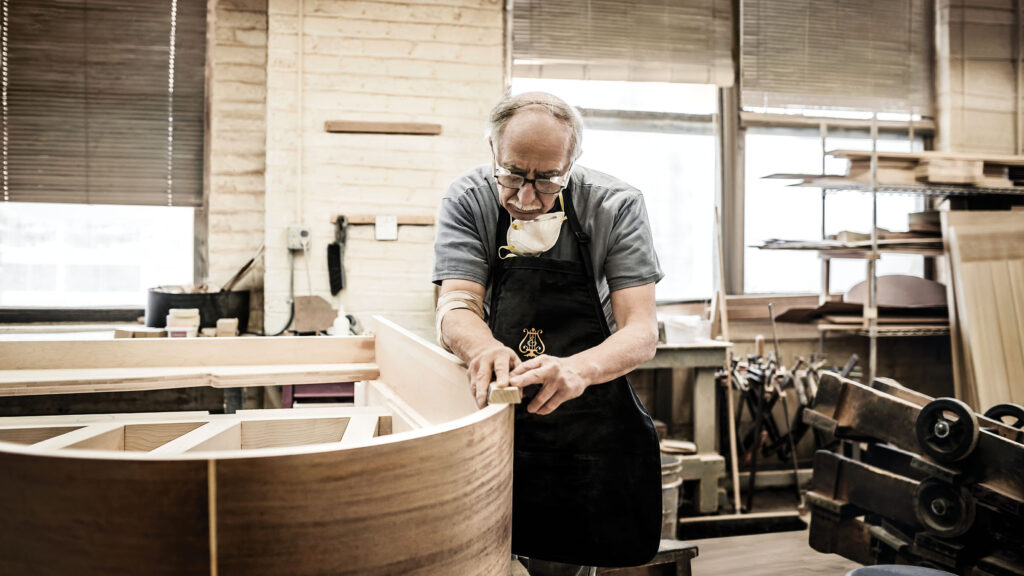
A craftsman sands the top of the Hard Rock Maple rim in the Case Department.
At Steinway & Sons, music begins with wood. Each year, the company uses more than 500,000 board feet of carefully selected hardwoods to craft its world-renowned grand and vertical pianos at its factories in Astoria, NY, and Hamburg, Germany.
The primary hardwood species include Hard Rock Maple—used extensively in the inner and outer rims, keybed caps, and the all-important pin block—along with Birch for leg pillars and Poplar for lighter, warp-resistant parts like lids. Most of the hardwood is sourced from upstate New York and Eastern Canada, while soundboards are crafted from Alaskan Sitka Spruce. According to the company website, Steinway sources the following exotic species: Kewazinga Bubinga, East Indian Rosewood, Macassar Ebony and more.
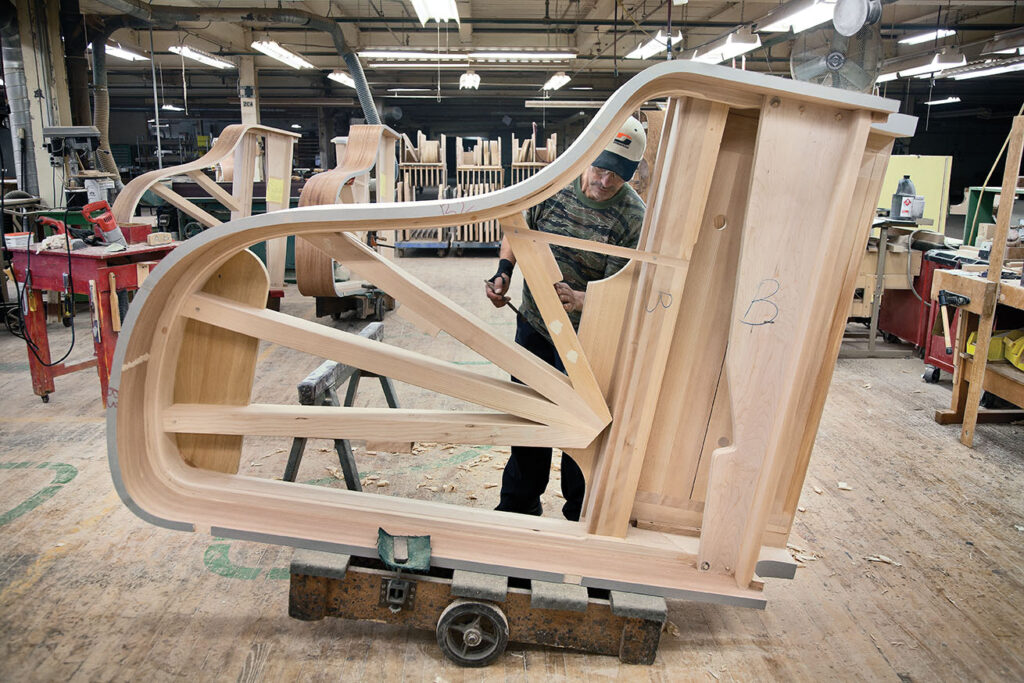
In the Case Department, radial braces, the keybed, the pinblock and other components are installed, as the rim transforms into a case.
To balance precision with tradition, Steinway has invested in high-end CNC technology, including a multimillion-dollar rim CNC machine that measures 74 points on each wooden rim to create a perfect 3D map. This ensures a flawless fit for soundboards and structural components, preserving acoustic quality while maximizing consistency. “Wood isn’t one-size-fits-all, and that’s where the tech comes in,” said Anthony Gilroy, vice president of marketing.
Despite these technological strides, much of the process remains intensely hands-on. In departments like “belly assembly,” artisans still bend rims around presses and hand-notch Spruce soundboards just as they did a century ago. Final tone regulation—voicing the piano to achieve brightness, warmth or mellow complexity—relies not on automation but the trained ear of an expert.
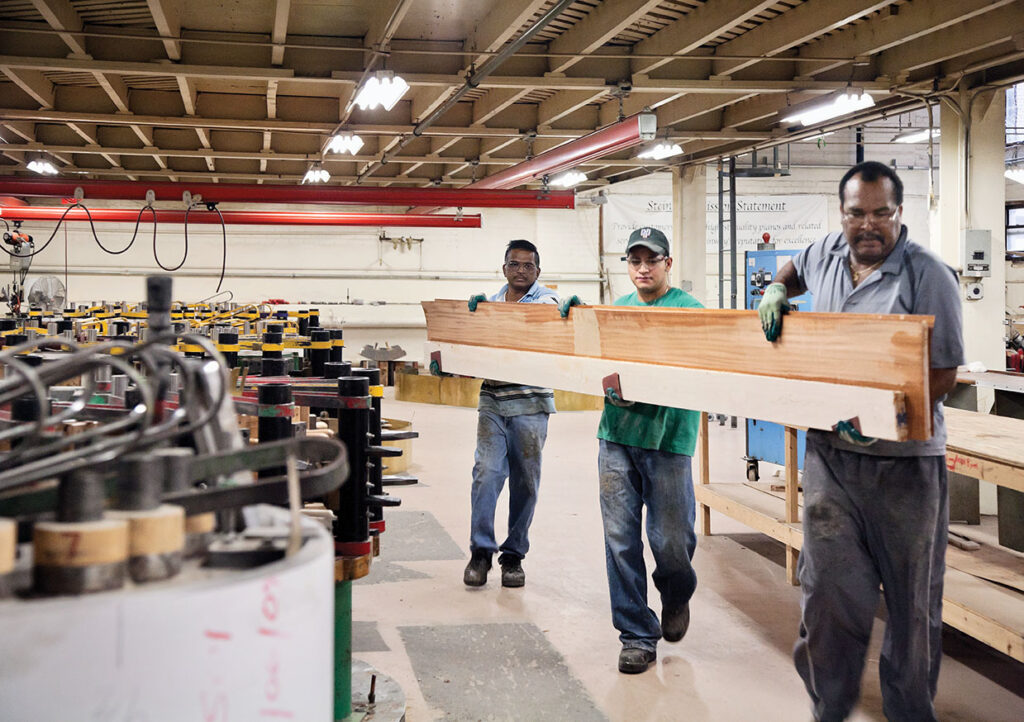
A team carries laminates of Hard Rock Maple that have just been glued together to a rim press. The rim will sit in that press overnight as the glue dries.
While Steinway’s production methods honor its heritage, the company is also reshaping the musical experience for a new generation. The Spirio high-resolution player piano combines Steinway’s traditional acoustic build with cutting-edge solenoid technology to replicate performances with breathtaking accuracy. “It’s not a player piano like you’d see in an old Western,” Gilroy said. “This plays back the exact nuances of a live performance—down to the hammer velocity—on an acoustic piano.”
The Spirio | r model adds a recording suite that allows users to capture and edit their own performances, making it a favorite among younger Steinway artists like Chloe Flower, who recorded her entire album using the platform.
Musicians across genres, including Lenny Kravitz, have collaborated with the company to design a custom limited-edition piano. With only 10 pieces created, the design-forward instruments sold quickly at $500,000 each. “He’s a great musician, an incredible designer and a longtime fan of Steinway,” Gilroy said.
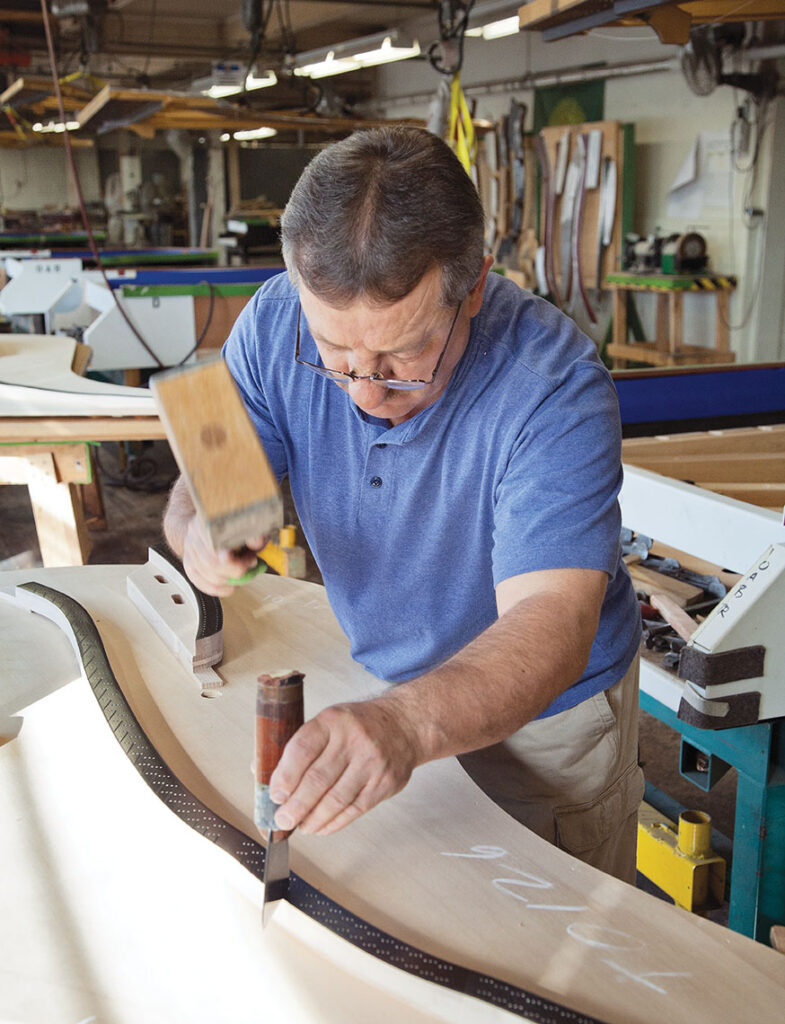
An artisan in the “belly” department hand notches the Maple bridge, which sits atop the soundboard.
Founded in 1853, Steinway & Sons has long set the gold standard for piano craftsmanship. Every Steinway is a product of over 170 years of evolution, tradition and a relentless pursuit of perfection. This legacy is embedded in every rim bend, soundboard carve, and hand-fitted action, culminating in an instrument that continues to define concert hall excellence across the globe.
Beyond Lenny Kravitz and Chloe Flower, Steinway has worked with a constellation of iconic artists. From jazz legends like Diana Krall to classical virtuosos such as Lang Lang and Olga Kern, each musician brings a unique voice that the Steinway is designed to honor. These collaborations don’t just inspire new musical interpretations—they often influence limited-edition designs and tonal refinements that elevate the instrument’s already prestigious pedigree.
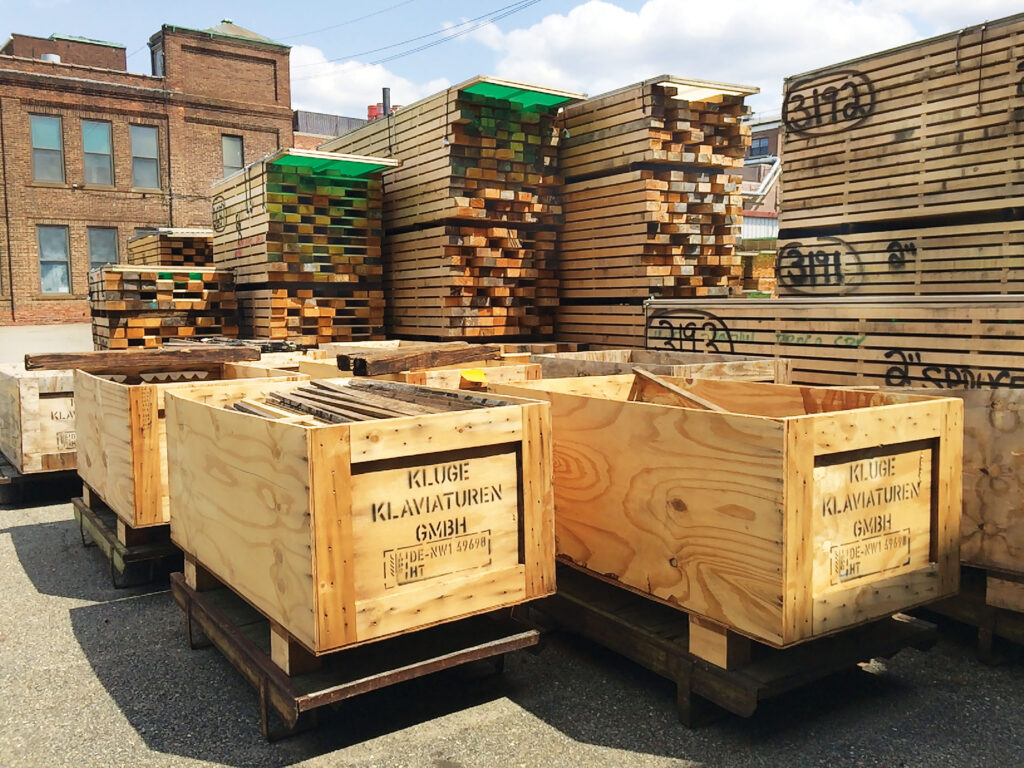
Steinway & Sons, headquartered in New York, NY, uses many different species of lumber based on the part of the piano and the function the wood has in that part of the process.
The implementation of CNC technology has revolutionized certain stages of Steinway’s building process. By incorporating five-axis CNC machines, Steinway achieves consistent precision cuts that reduce material waste and increase fit accuracy. This doesn’t replace human craftsmanship but rather enhances it—giving artisans more reliable foundations on which to apply their expertise. The result is not only greater efficiency, but also even higher quality in critical structural components like the rim and soundboard interface.
Tone regulation at Steinway is a sacred art. Each tone regulator is a trained artisan who listens intently to the subtle characteristics of every piano, adjusting hammer density and string alignment to meet a specific tonal profile. This bespoke voicing process is never rushed and can take dozens of hours. The aim isn’t uniformity—it’s personality.
Whether destined for a symphony stage or an intimate lounge, each piano sings in its own voice.
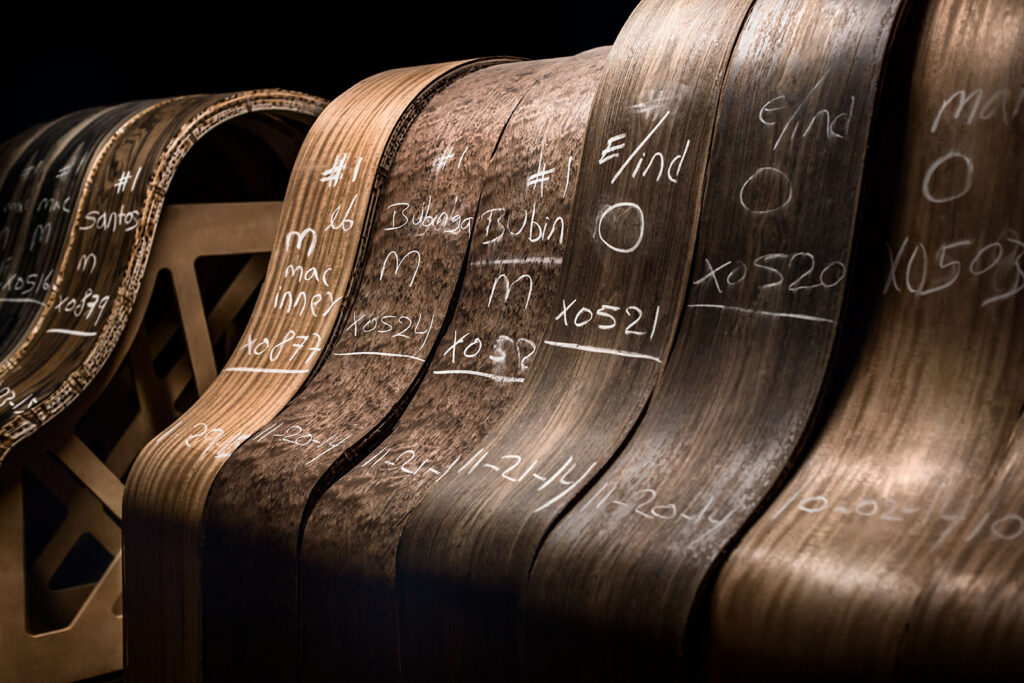
Rims spend at least a couple of months curing in the rim conditioning room, where the moisture that has been added to the rim from the gluing process gradually is drawn out.
Steinway emphasizes sustainability in its sourcing. The majority of their hardwoods come from responsibly managed forests in the Northeastern United States and Canada. For its renowned Alaskan Sitka Spruce soundboards, the company maintains relationships with ethical harvesters. Their approach ensures long-term wood availability while maintaining the acoustic superiority that Steinway instruments demand. Quality and conservation go hand in hand in the brand’s ongoing commitment to excellence.
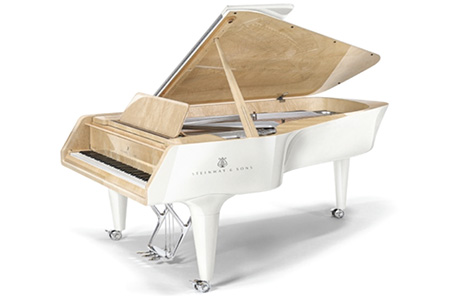
Pictured here is a Steinway & Sons White Sycamore piano.
As Steinway & Sons continues to evolve, its dedication to excellence remains as strong as ever. With an unwavering focus on craftsmanship, artist collaboration, and cutting-edge innovation, the company holds firm to the belief that each piano is not just an instrument, it’s a lifelong partner in musical expression.
From concert halls to living rooms, Steinway pianos are built to inspire, to endure, and to carry on a legacy that spans more than a century and a half.
Steinway & Sons is a proud member of the Hardwood Manufacturer’s Association, National Association of Music Merchants, the Piano Manufacturers Association International and other key industry organizations.
For more information, visit steinway.com.


